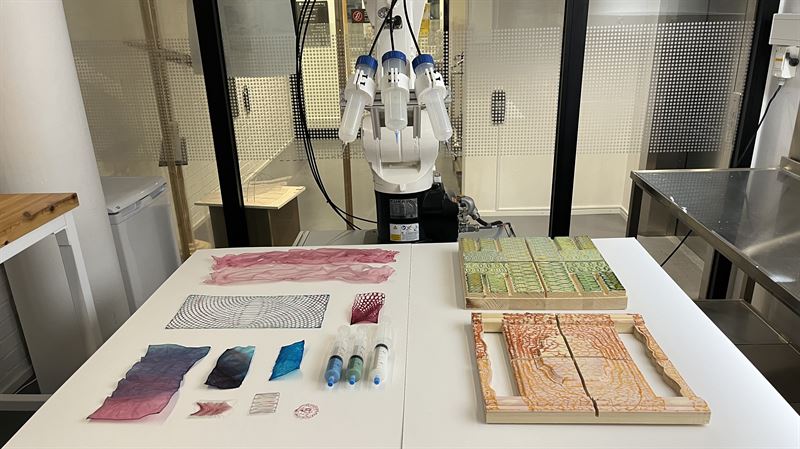For the first time, a hydrogel material made from nanocellulose and algae has been tested as an alternative, more environmentally friendly building material. The study by Chalmers University of Technology in Sweden and the Wallenberg Wood Science Center shows how the abundant sustainable material can be 3D printed into a variety of architectural components using much less energy than conventional construction methods.
The construction industry is one of the largest consumers of fossil resources and producers of CO2 emissions in the world. Against this backdrop, research into biomaterials and their applications is becoming increasingly important to promote a more sustainable future in line with initiatives such as the European Green Deal.
Nanocellulose, known for its application in biomedicine, is transformed for the first time into a moldable and drying architectural component by the addition of alginates from algae.
“For the first time we have explored an architectural application of nanocellulose hydrogel. Specifically, we provided the so far missing knowledge on its design-related features, and showcased, with the help of our samples and prototypes, the tuneability of these features through custom digital design and robotic 3D printing,” says Malgorzata Zboinska, lead author of the study from Chalmers University of Technology.
The use of nanocellulose, a by-product of forestry, agriculture and the paper industry, is in line with the objectives of the European Green Deal on resource efficiency and the circular economy in the construction industry. The combination of 3D printing technology and nanocellulose enables resource-efficient production, as this process requires no heat and only air pressure, unlike conventional construction methods.
The research team designed different tool paths for the 3D printing process to investigate how the nanocellulose hydrogel behaves in different shapes and patterns. The results show a wide range of possible applications in architecture, from lightweight room dividers to blinds and wall panel systems. These innovative materials also offer potential for coatings on existing building elements, such as tiles, acoustic damping elements and cladding.
“Traditional building materials are designed to last for hundreds of years. Usually, they have predictable behaviours and homogenous properties. We have concrete, glass and all kinds of hard materials that endure and we know how they will age over time. Contrary to this, biobased materials contain organic matter, that is from the outset designed to biodegrade and cycle back into nature. We, therefore, need to acquire completely new knowledge on how we could apply them in architecture, and how we could embrace their shorter life cycle loops and heterogenous behaviour patterns, resembling more those found in nature rather than in an artificial and fully controlled environment. Design researchers and architects are now intensely searching for ways of designing products made from these materials, both for function and for aesthetics,” says Malgorzata Zboinska.
This study marks a first step in demonstrating the scaling potential of dried, 3D-printed nanocellulose membrane constructs and provides new insights into the relationship between the design of material deposition by 3D printing and the resulting dimensional, textural and geometric effects. This knowledge forms an important basis for further research into nanocellulose in architectural products that need to fulfill specific functional and aesthetic requirements.
“The yet not fully known properties of novel biobased materials prompt architectural researchers to establish alternative approaches to designing these new products, not only in terms of the functional qualities, but also the acceptance from the users. The aesthetics of biobased materials are an important part of this. If we are to propose these biobased materials to society and people, we need to work with the design as well. This becomes a very strong element for the acceptance of these materials. If people do not accept them, we will not reach the goals of a circular economy and sustainable built environment”.
Subscribe to our Newsletter
3DPresso is a weekly newsletter that links to the most exciting global stories from the 3D printing and additive manufacturing industry.






















